The Lowdown
The OnePlus 9 starts at $729, where the OnePlus 9 Pro starts at $969, and that’s a $240 difference. You’re the only one who can decide if the telephoto camera, QHD+ display, and faster wireless charging found on the 9 Pro justify its expense. But if I were buying one today, and if I was on T-Mobile, I’d likely go for the OnePlus 9. Both flagships share so many excellent features that it wouldn’t even feel like a sacrifice.
Overall
Pros
- Bright, beautiful screens available in a gentle curve on the OnePlus 9 Pro or flat on the OnePlus 9
- Up to 120Hz refresh rate
- Premium build and design
- Top-of-the-line Qualcomm Snapdragon 888 SoC
- Warp Charge 65T is blazing fast
- 50W Wireless Charging on the OnePlus 9 Pro and 15W wireless charging on the OnePlus 9
- Warp Charge 65T charger and cable included in the package
- IP68 dust and water resistance on the OnePlus 9 Pro
- Option of FHD+ or QHD+ on the OnePlus 9 Pro
Cons
- No Dual SIM for USA models
- Fingerprint reader is really close to the bottom of the screen and slightly less easy to use than on previous models
- No 5G support unless you are on T-Mobile or Verizon
- The OnePlus 9 Pro is quite expensive
- No stated IPXX rating on the OnePlus 9 (it is stated for the T-Mobile version)
- OnePlus 9 Pro is expensive!
After using and reviewing the OnePlus 8T and deeming it “nearly perfect,” I had high expectations for the OnePlus 9 and the OnePlus 9 Pro. After using them both for the past two months, I have a lot to say.
Before jumping in, I want to give quick props to OnePlus for their cool, moon-focussed media kit packaging. The box was fun to open, and I liked how the contents were on-theme with OnePlus’s new partnership with Hasselblad. Once opened, the large red box’s bottom unfolded to reveal a historic moonshot of Astronaut Alan L. Bean taken with a Hasselblad camera on the 1969 Apollo 12 mission during his spacewalk on the moon’s surface. It’s kind of crazy to consider that the camera that took this photo is one of the Hasselblads still lying on the moon …
… from Apollo 11 to the final Apollo 17 mission, a total of twelve camera bodies were left behind on the lunar surface. Only the film magazines containing the momentous images were brought back. The resulting photographs captured the history of humanity in the making.
But now we can have a taste of that historical tech right in our smartphones with the enhancements that comprise “Natural Color Calibration with Hasselblad.”
- OnePlus’s typical red packaging; nothing unusual here.
- Opening the media kit revealed the red retail boxes for the OnePlus 9 in Astral Black and the OnePlus 9 Pro in Morning Mist.
- Accessories in the media kit included a OnePlus 9 Sandstone Bumper Case in Black, a OnePlus 9 Pro Karbon Bumper Case in Black, and a OnePlus Warp Charge 50 Wireless Charger.
Let’s talk about all of the features that the 9 Series phones share and a few of their differences. This might be handy if you aren’t sure which one you’d prefer.
As far as build quality goes, both of the OnePlus 9 Series flagships are very solid; the biggest choice here is just going to be a matter of personal preference regarding which type of display appeals to you more.
Some immediate differences include that the OnePlus 9 has a fiberglass-reinforced polymer frame with a curved case back made of Corning Gorilla Glass 5, while the OnePlus 9 Pro has a shiny silver aluminum frame with a curved case back that is also made of Corning Gorilla Glass 5.
The OnePlus 9 keeps the excellent 6.55″ flat-panel AMOLED Corning Gorilla Glass 5 display (2400 x 1080p at 402 ppi) we last saw on the OnePlus 8T. This display can support your choice of either a 60Hz or a 120Hz refresh rate, and it has a peak brightness of up to 1,100 nits.
The OnePlus 9 Pro, on the other hand, has a very gently curved 6.7″ LPTO AMOLED Corning Gorilla Glass 5 display that offers a choice of FHD+ (2412 x 1080p at 525 ppi) or, if you are unconcerned about preserving battery life, 3216 x 1440 (QHD+) at 525 ppi. You can opt to use the standard screen refresh rate of 60Hz, or you can select Smart 120Hz under settings that will automatically adjust the display’s frame rate from 120Hz all the way down to 1Hz to help preserve battery life when it’s not needed.

The OnePlus 9 is on the left, and the OnePlus 9 Pro is on the right. Both phones have a punch hole front-facing camera in the upper left of the display.
On top of the usual PIN, Password, or Pattern unlock, you can unlock both the OnePlus 9 and OnePlus 9 Pro via face or fingerprint, and both bio-security methods are fast and accurate.
Worth noting, however, is that there is a new placement for the otherwise excellent under-display fingerprint unlock. It has been moved down quite significantly from about 0.25″ above the bottom of the display versus about 1.5″ above the bottom of the display, where it has been on previous OnePlus models. So bear in mind that if you are used to a higher in-display fingerprint unlock method, this lower placement may not feel nearly as intuitive.
The OnePlus 9 and the OnePlus 9 Pro use Qualcomm’s flagship Snapdragon 888 5G mobile platform, and they run Oxygen OS 11, which is built on Android 11. Oxygen OS 11 is a clean and intuitive overlay that doesn’t add many extras to clutter up the near-stock Android experience. Each of the phones I received for review came with 8GB LPDDR5 RAM and 256GB user memory, so both are similarly fast with plenty of storage room. Neither phone can accept a memory card.
Both OnePlus 9 Series phones feature dual stereo speakers with Dolby Atmos. Unless you are trying to use the phone as a portable speaker, in which case you’ll likely find the bass lacking, you’ll think they both sound really good.
If you’re a gamer, you’ll appreciate that both models have been optimized for cooling, “using a five-layer heat dissipation structure which is equipped with a large-area VC soaking plate, graphite, copper foil, thermal gel, copper carbon, etc.”
Both phones feature a dual-cell 4,500mAh battery; they can be charged from 1-100% in just 29 minutes using Warp Charge 65T via the USB TYpe-C port. In stark contrast to the OnePlus 8 and 8T, the OnePlus 9 now supports up to 15W Qi-wireless charging. The OnePlus 9 Pro ups the game by supporting Warp Charge 50 Wireless, which can fully charge the smartphone from 1-100% in 43 minutes — even when the 9 Pro is placed on the new OnePlus Warp Charge 50 Wireless Charger horizontally.
Worth pointing out is that the OnePlus 9 does not carry a stated water or dust resistance rating unless you buy it directly from T-Mobile (their version has IP68 dust and water resistance). However, you may have some protection with a non-T-Mobile OnePlus 9. In contrast, the OnePlus 9 Pro comes with stated IP68 dust and water resistance no matter where you buy it from.
A caveat for both models is that OnePlus has moved to a single-SIM on the 9 Series versus the dual-SIM they usually offer. I have no idea what the thinking was behind this; it’s been speculated in various online forums that this was a capitulation to T-Mobile, as they are the only US carrier selling them in-store. This might not be a big deal for most, but if you travel a lot and like to buy a local SIM to use in your unlocked phone when in foreign countries, or if you prefer only to carry one device instead of both a “work” and “personal” phone, you’ll be disappointed by this downgrade from previous models. Whatever the reasoning, it won’t be a welcome change for anyone used to taking advantage of the feature.
Another caveat to consider is how important 5G access is to you. As T-Mobile is their lone US carrier, they are the carrier getting the best 5G support. On the OnePlus 9 and OnePlus Pro order pages, they show carrier connectivity support for the US. As of now, there is no 5G support listed for AT&T (but you will get 4G/LTE), and you still can’t get Wi-Fi-assisted calling. Keep that in mind that if you want 5G and you’re an AT&T customer; the only networks you can get 5G on with either phone are T-Mobile and now Verizon via their “bring your own device” program.
Since 5G bands are only available on T-Mobile and Verizon, it would have been a nice option if a 4G-only model were also offered for those on other networks, preferably at a discount. But alas.
The OnePlus 9 has three cameras on the rear, including a 48-megapixel Main Camera, a 50-megapixel Ultra-Wide Camera, and a Monochrome Lens. The OnePlus 9 Pro has four cameras on its rear, including a 48-megapixel Main Camera, a 50-megapixel Ultra-Wide Camera, an 8-megapixel Telephoto Camera, and a Mono Camera. Both phones have a rear dual-tone LED flash.
Each of the OnePlus 9 Series phones features Hasselblad Camera for Mobile on-board. In this iteration of OnePlus’s and Hasselblad’s three-year partnership, emphasis has been placed on optimizing the 9 Series cameras’ color performance through “Natural Color Calibration with Hasselblad.” This helps with the accuracy of skin tones and natural colors.
Here are some more photos of the phones together.
Now let’s talk about each phone specifically.
The OnePlus 9
In the box, you’ll find the OnePlus 9, a Warp Charge 65 wall charger, a Warp Charge Type-C to Type-C Cable, a quick start guide, a welcome letter, safety information and warranty card, a sheet of OnePlus logo stickers, a SIM tool, and a factory-applied screen protector. It’s sad that I even have to comment on it, but I appreciate that OnePlus includes the high-speed wall charger without assuming you already have one or necessitating an extra purchase. If you have a 45W laptop, this charger can power it, too!
OnePlus 9 Hardware Walk-Around
The OnePlus 9 measures 6.29″ long by 2.92″ wide by 0.34″ thick, and it weighs 6.8 ounces. I received the 12GB LPDDR5 RAM and 256GB storage which comes in Astral Black only; the 8GB LPDDR5 RAM and 128GB storage version is available in Astral Black and Winter Mist (silver).
In the upper left of the flat, 6.5″ AMOLED FHD+ display, you can see the 16-megapixel front-facing camera. Its sensor is the Sony IMX471 (ƒ/2.4), and it has electronic image stabilization. The front-facing camera is capable of filming video at 1080p at 30 frames per second, and it can also record time-lapse videos. Centered just above the display is a ~0.7″ long ear speaker.
On the top of the smartphone, there is a microphone.
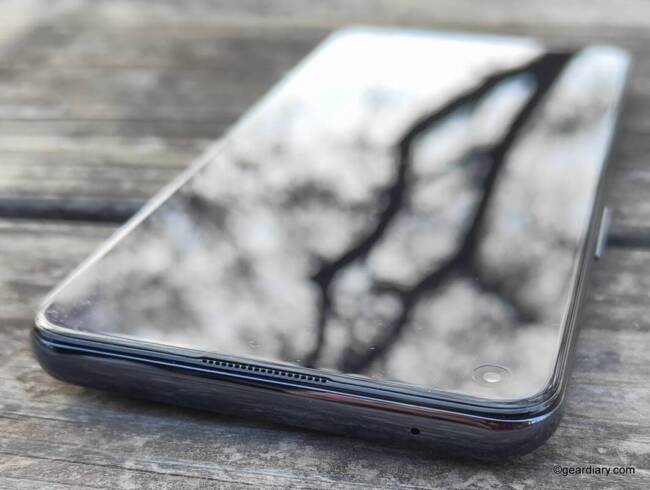
You can see the ear speaker better in this photo; you’ll also notice that there are no antenna lines in the case — one of the subtle benefits of the fiberglass-reinforced polymer frame.
On the right side, there is a power button and OnePlus’s usual three-stop ring, vibrate, and mute alert slider, which has ridges cut into it so you can differentiate it from the power button, even when it is in your pocket.
On the bottom of the US versions, you’ll find a single-SIM tray followed by a microphone, a USB Type-C port, and a speaker.
On the right side, there is a volume rocker.
On the back, there is a triple Hasselblad Camera for Mobile system that includes a 50-megapixel ultra-wide 1/1.56” Sony IMX766 sensor (f/2.2) with a Freeform Lens to minimize edge distortion. You can also use this camera to capture macro photos from as close as 4cm away from your subject. Notably, the OnePlus 9’s ultra-wide camera does not have image stabilization; if you tend to shake, this may be a problem.
The 48-megapixel main camera has a custom-designed 1/1.43” Sony IMX689 sensor (f/1.8), 2×2 on-chip lens, with electronic image stabilization, the ability to shoot in 12-bit RAW, dual native ISO, and DOL (digital overlap)-HDR. The dedicated monochrome camera works with the main camera to provide detailed and layered black and white photos, and there is a dual-LED flash.
The OnePlus 9 can shoot 8K video at 30 frames per second and 4K video at 30 or 60 fps; it can shoot 1080p video at 30 or 60 fps, as well as super-slow-motion video in 1080p at 240 fps and 720p video at 480 fps, and time-lapse video in 4K at 30 fps or 1080p at 340 fps.
The OnePlus 9 Camera
Options for shooting photos on the OnePlus 9 include Time-Lapse videos (1080p at 30fps or 4K at 30 fps), Panorama, Slow-Motion video (720p video at 480 fps or 1080p video at 240 fps), Video (8K video at 30 fps or 4K video at 30/60 fps), Photo, Portrait, Nightscape, Pro, and Tilt-Shift. To subtly drive home that the camera is a Hasselblad collaboration, the clicker button for all camera options is now orange rather than white, except for the video clicker, which is still red. It’s a little thing, but it’s a nice touch.
Here are some examples of photos taken with the OnePlus 9. I think the Hasselblad-tuned cameras do an excellent job of capturing the colors of the subjects I was shooting. I was quite impressed!
The OnePlus 9 came with OnePlus Gallery as the default photo viewer. Since I prefer Google Photos to be my main Gallery app, it was straightforward to change this under Settings/Default Apps/Gallery App. This is a bit more straightforward than the method I used when I switched the default gallery app on the 8T several Oxygen OS updates ago, so I consider that a win.
OnePlus 9 Battery, Speed, and Day-to-Day Use
In many ways, the OnePlus 9 offers an evolutionary upgrade to the OnePlus 8T. Its design appears largely the same if you are looking at it from the front. The only obvious exterior differences are the fiberglass-reinforced polymer frame (the 8T has an aluminum frame) and the Hasselblad branded camera array on the back. The OnePlus 9’s back, being made from glass, is quite slick and a bit of a fingerprint magnet, but if you keep it in a case, that’s a non-issue. The 9 is solidly built with a slight curve on the back that feels good in the hand. While the OnePlus 9’s frame isn’t aluminum, it doesn’t feel inferior or “cheaper” by any means — even when I hold the more expensive 9 Pro in my other hand.
- The camera array on the back protrudes just a bit when it’s not in a case making the phone wobble on tabletops, but the phone lies flat when inside a case.
I have zero complaints about the phone’s speed, but that was to be expected considering that this OnePlus 9 has 12GB LPDDR5 RAM and the top-of-the-line Qualcomm Snapdragon 888 mobile platform. Not once have I experienced any stutters or lock-ups, but with these specs, it would be more notable if I had.
The FHD+ display gives you the option of choosing a 60Hz or 120Hz refresh rate; I’ve left it on 120 Hz because when that’s an option that’s offered, I always want to take it. What you can expect from a display that has a 120Hz refresh rate is an experience with super smooth transitions while scrolling; even more importantly, it means a better gaming experience because there are fewer judders or lags than on a 60hz screen. And while I’m not a major gamer (I tend to stick to word and woodblock puzzles because I am boring like that), the difference between the two settings is still noticeable in most apps.
Battery life on the OnePlus 9 has been excellent, just as it was with the 8T. I can make it about 9 hours without needing to top it off, but when I need to, charging can be quickly done with the Warp Charge 65T charger (which can take the phone from 1-100% in just 29 minutes), or I can take advantage of the 15W wireless charging that the OnePlus 8T didn’t offer.
The OnePlus 9 builds on everything I liked about the 8T, adding upgraded processors, cameras, and wireless charging. This is a great choice to consider, especially when looking at the significant price difference between it and the overly pricy OnePlus 9 Pro. With that said, if you already have an 8, 8 Pro, or an 8T, I don’t think there is enough here to warrant an upgrade yet. If I were you, I’d sit this one out and wait to see what the 9T or the 10 Series brings to the table.
The OnePlus 9 5G with 8GB LPDDR5 RAM and 128GB storage sells for $729.00, and the 12GB LPDDR5 RAM with 256GB storage version sells for $829. It is available directly from the manufacturer and other retailers, including Amazon and T-Mobile.
Source: Manufacturer supplied review sample
What I Like: The gloriously vivid, large, and flat 6.55″ display; Cameras are very good; 120Hz refresh rate; Premium build and design; Highly responsive and accurate in-screen fingerprint readers and facial recognition; Top-of-the-line Qualcomm Snapdragon 888 SoC; Excellent battery life; Warp Charge 65T is blazing fast; Qi Wireless charging at 15W; Warp Charge 65T charger and cable included in the package
What Needs Improvement: No dual-SIM in USA version; Fingerprint reader is really close to the bottom of the screen and slightly less easy to use than on previous models; No stated IPXX rating on any but the T-Mobile versions; No 5G support unless you are on T-Mobile and Verizon
•••••
The OnePlus 9 Pro
In the box, you’ll receive the OnePlus 9 Pro 5G, a Warp Charge 65 wall charger, a Warp Charge Type-C to Type-C Cable, a quick start guide, a welcome letter, safety information and warranty card, a sheet of OnePlus logo stickers, a SIM tool, and a factory-applied screen protector. Again, kudos to OnePlus for not making you pay extra if you don’t already have a high-speed Type-C wall charger.
OnePlus 9 Pro Hardware Walk-Around
The OnePlus 9 Pro measures 6.42″ long by 2.89″ wide by 0.34″ thick, and it weighs 7.1 ounces. I received the 12GB LPDDR5 RAM and 256GB storage which is available in Pine Green and Astral Mist; the 8GB LPDDR5 RAM and 128GB storage version is only available in Pine Green.
The gently curved 6.7″ LPTO AMOLED display features what OnePlus is calling “Fluid Display 2.0,” which integrates LTPO, or low-temperature polycrystalline oxide technology (which we also saw on the OPPO Find X3 Pro), to enable the OnePlus 9 Pro’s display to automatically adjust from its 120Hz refresh rate (which is perfect when you are playing games or scrolling) to 24Hz (for when you’re watching movies, for instance), all the way down to 1Hz (which is great for viewing photos or reading text), based on what you are doing on-screen. The idea here is that you’ll save on battery life when the power-hungry 120Hz refresh rate isn’t needed.
In the upper left-hand corner, there is a 16-megapixel front-facing camera. Like the OnePlus 9, the OnePlus 9 Pro’s sensor is the Sony IMX471 (ƒ/2.4), and it has electronic image stabilization. It can film video at 1080p at 30 frames per second, as well as time-lapse videos. Centered just above the display is a ~0.7″ long ear speaker.
On the top, there is a microphone.
There is a power button on the right side and a ridged three-stop ring, vibrate, and mute alert slider.
There is a single-SIM tray, a microphone, the Type-C port, and a speaker on the bottom.
And on the left side, there is a volume rocker.
On the back, the OnePlus 9 Pro has a Quad Hasselblad Camera for Mobile system with the same 50-megapixel Sony IMX766 ultra-wide lens found on the OnePlus 9, as well as the same monochrome camera that will work with the main camera. Again, this camera does not offer image stabilization.
The 48-megapixel main camera has a 1/1.43” Sony IMX789 sensor (f/1.8), with electronic image stabilization as well as optical image stabilization. It is also able to shoot in 12-bit RAW, dual native ISO, and DOL-HDR.
The extra lens that you get by upgrading to the OnePlus 9 Pro is an 8-megapixel telephoto lens, which offers 3.3X (77mm) optical zoom with up to 30X digital zoom.
There is a dual-LED flash in the camera module, as well as an additional laser focus and a microphone for zoom audio; when shooting a video, the sound can also “zoom” in or out as you zoom the video in or out.
The OnePlus 9 Pro can shoot 8K video at 30 frames per second and 4K video at 30, 60, or 120 fps; it can shoot 1080p video at 30 or 60 fps, as well as super-slow-motion video in 1080p at 240 fps and 720p video at 480 fps, and time-lapse video in 4K at 30 fps or 1080p at 340 fps.
The OnePlus 9 Pro Camera
Options for shooting photos on the OnePlus 9 Pro include Nightscape, Time-Lapse videos (1080p at 30fps or 4K at 30fps), Panorama, Slow-Motion video (720p video at 480 fps or 1080p video at 240 fps), Video (8K video at 30 fps or 4K video at 30/60/90 fps), Photo, Portrait, Pro, and Tilt-Shift. As on the OnePlus 9, the clicker button for all camera options is now orange rather than white, except for the video clicker, which is still red.
Again, I think the cameras did an excellent job at capturing the colors of what I was trying to photograph.
OnePlus 9 Pro Battery, Speed, and Day-to-Day Use
The OnePlus 9 Pro has an elegant and refined build that feels like a top-of-the-line model; the phone is solidly built, but it doesn’t feel like a brick. The OnePlus 9 Pro’s back is also quite slick and slippery, as well as being a total fingerprint magnet; keep it in a case!
- The camera array on the back protrudes just a bit when it’s not in a case making the phone wobble on tabletops, but the phone lies flat when inside a case.
Again, I have zero complaints about the phone’s speed, and I haven’t experienced any stutters or lock-ups. That’s to be expected from 12GB of LPDDR5 RAM and the top-of-the-line Qualcomm Snapdragon 888 mobile platform.
Under Settings/Display/Advanced, the OnePlus 9 Pro gives you the option to select the resolution mode you’d like to use. The first choice is FHD+, which is listed as “excellent display, lower power consumption (2412 x 1080), or you can select the second, QHD+, which is listed as “maximum clarity, increased power consumption (3216 x 1440).” You also have the option to choose your display’s refresh rate, with the option of Smart 120Hz, which automatically adjusts the display’s frame rate from 120Hz all the way down to 1Hz to help preserve battery life when it’s not needed, or Standard 60Hz.
Look, if the phone is going to offer such amazing specs, it makes sense not to take advantage of them!
But of course, your battery may take a bit of a ding, especially if you are playing a lot of processor-intensive games. In my use, the OnePlus 9 Pro was able to last about 7 hours without needing a top-off, but when it was time, it was easy enough to do quickly — the OnePlus 9 Pro can be charged from 1-100% in just 29 minutes using Warp Charge 65T. Because of its dual-cell battery design, both battery cells can wirelessly charge at 25W; with the optional $70 Warp Charge 50 Wireless Charger, you can fully charge the OnePlus 9 Pro from 1-100% in 43 minutes. That makes it really easy not to worry about battery life and keep all the settings on their highest marks.
If you already have a OnePlus 8Pro, I would sit out on this upgrade. The 9 Pro is very nice, but for the money, it’s not quite a big enough leap forward to justify the cost unless you prefer always to have the latest and greatest. If you have a 6 or 7 series, however, you’ll definitely appreciate the feature jump.
It’s hard to say if I would recommend the OnePlus 9 Pro over the OnePlus 9. The OnePlus 9 starts at $729, where the OnePlus 9 Pro starts at $969, and that’s a $240 difference. You’re the only one who can decide if the telephoto camera, QHD+ display, and faster wireless charging found on the 9 Pro justify its expense. But if I were buying one today, and if I was on T-Mobile, I’d likely go for the OnePlus 9. Both flagships share so many excellent features that it wouldn’t even feel like a sacrifice.
The OnePlus 9 Pro with 8GB LPDDR5 RAM and 128GB storage sells for $969, and the 12GB LPDDR5 RAM and 256GB storage version sells for $1069.00. It is available directly from the manufacturer and other retailers, including Amazon and T-Mobile.
Source: Manufacturer supplied review sample
What I Like: Bright, beautiful screen; 120Hz variable refresh rate; Premium build and design; Top-of-the-line Qualcomm Snapdragon 888 SoC; Warp Charge 65T is blazing fast; 50W Wireless Charging; Warp Charge 65T charger and cable included in the package; IP68 dust and water resistance; Option of FHD+ or QHD+
What Needs Improvement: No Dual SIM in USA models; Fingerprint reader is really close to the bottom of the screen and slightly less easy to use than on previous models; Expensive; No 5G support unless you are on T-Mobile or Verizon; OnePlus 9 Pro is expensive!
•••••
Not sure which would work best for you? Here are the two OnePlus 9 models’ features in a nutshell:
| OnePlus 9 | OnePlus 9 Pro | |
|---|---|---|
| Display | Flat 6.5″ AMOLED, 2400 x 1080p (FHD+) at 402 ppi | Gently Curved 6.7″ LPTO AMOLED; choice of 2412 x 1080p (FHD+) or 3216 x 1440 (QHD+) at 525 ppi |
| Size and Weight | 6.29″ long by 2.92″ wide by 0.34″ thick; 6.8 ounces | 6.42″ long by 2.89″ wide by 0.34″ thick; 7.1 ounces |
| Software Version | Oxygen OS 11, built on Android 11 | Oxygen OS 11, built on Android 11 |
| Unlock Modes | In-display fingerprint reader, Facial recognition, PIN, Pattern, Smart Lock, Password | In-display fingerprint reader, Facial recognition, PIN, Pattern, Smart Lock, Password |
| Software Version | Oxygen OS 11, built on Android 11 | Oxygen OS 11, built on Android 11 |
| Refresh Rate | Offers a choice of 60 or 120Hz | Offers a choice of 60Hz or Smart 120Hz (1Hz – 120Hz) |
| Rear Cameras | 48-megapixel main, 50-megapixel ultrawide, monochrome | 48-megapixel main, 50-megapixel ultrawide, 8-megapixel telephoto, monochrome |
| Front Camera | 16-megapixel | 16-megapixel |
| Processor | Snapdragon 888 5G mobile platform | Snapdragon 888 5G mobile platform |
| RAM | 8GB LPDDR5 or 12GB LPDDR5 | 8GB LPDDR5 or 12GB LPDDR5 |
| Storage | 128GB or 256GB | 128GB or 256GB |
| Battery | Dual-cell 4,500 mAh | Dual Cell 4,500 mAh |
| Charging | 65W wired and 15W wireless | 65W wired and 50W wireless |
| IP Dust & Water Resistance | None stated unless bought from T-Mobile, in which case it’s IP68 | IP68 |
| Colors Available | 8GB/128GB – Astral Black or Winter Mist
12GB/256GB – Astral Black |
8GB/128GB – Pine Green
12GB/256GB – Pine Green or Morning Mist |
| Price | 8GB/128GB –$729
12GB/256GB – $829 |
8GB/128GB – $969
12GB/256GB – $1069 |
| 5G Support | T-Mobile and Verizon | T-Mobile and Verizon |



















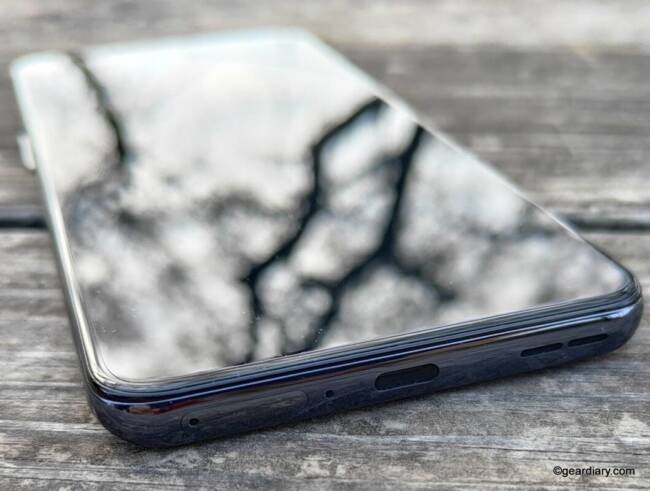









































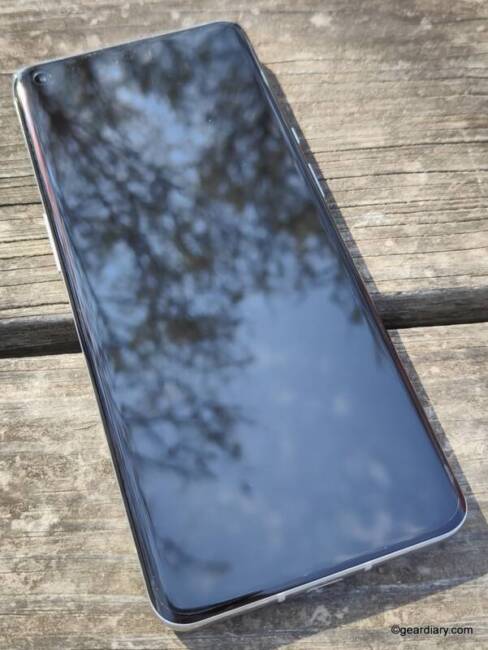

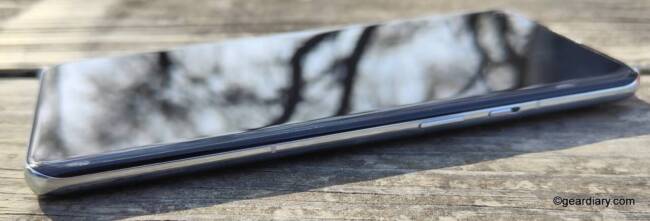


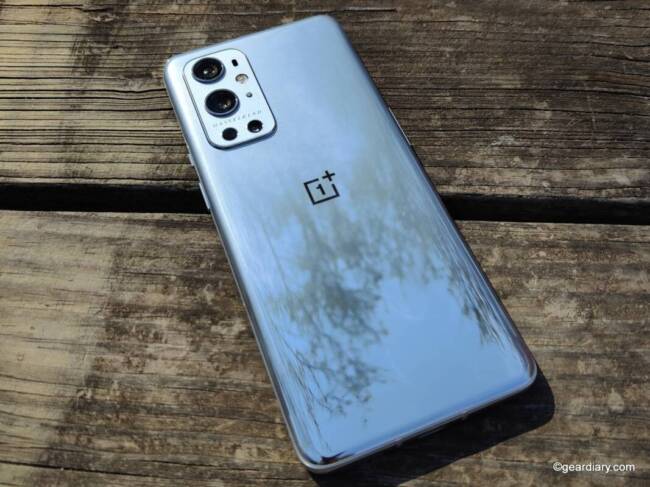






















































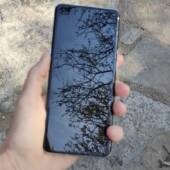


Do any carrier variants ever have exterior differences that would affect waterproofing? The differences seem to always be on the inside, which should have no effect on that.